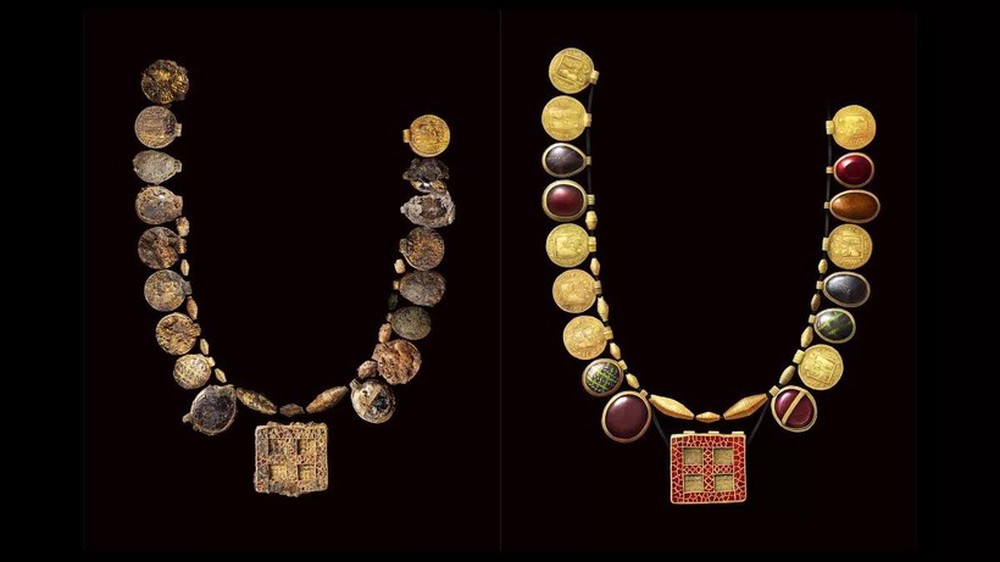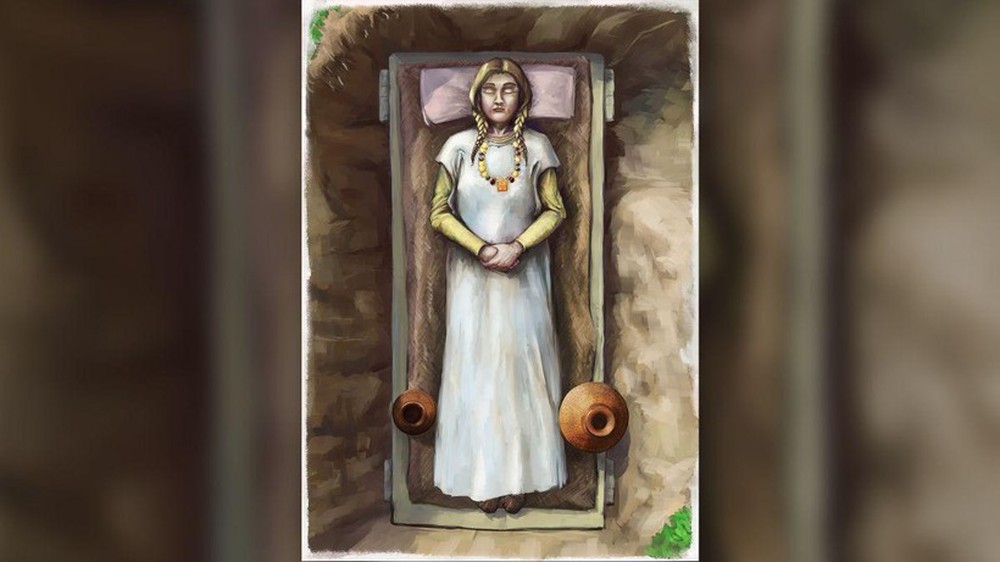In a remarkable discovery, British archaeologists have uncovered a trove of medieval jewelry, shedding light on an elite woman’s burial dating back to 630-670 AD in Northamptonshire, England. The findings, collectively known as the “Harpole Treasure,” were unearthed during the construction of a housing complex and have provided invaluable insights into early medieval burial practices.

Reconstruction of a medieval ring (left) and illustration (right). Photo: London Museum of Archeology.
The centerpiece of the discovery is an elaborate silver cross in the shape of a human face, suggesting the high status of the individual buried in the tomb. Alongside it, a gold necklace adorned with precious stones and a pendant featuring Roman coins were also found. The burial ceremony is believed to be that of a woman of great importance, possibly an early female Christian leader.
Conservators from the Museum of London Archeology (MOLA) meticulously cleaned and reconstructed the necklace, which boasts 30 different types of beads for a unique and modern appearance. At its center is a cross made from gold-plated garnets, making it a truly extraordinary piece.

The illustration shows an early medieval woman buried with a precious necklace and two decorative vases. Photo: London Museum of Archeology
Named after the parish where the tomb was discovered, the “Harpole Treasure” has been hailed as a significant find. Levente-Bence Balázs, MOLA supervisor, expressed the rarity of the discovery, stating, “The research team has never found jewelry as ornate as the early medieval Harpole necklace.”

In addition to the necklace, the burial site contained two exquisitely decorated urns, a bronze plate, and another silver cross. The presence of two crosses has led researchers to speculate that the woman played a noteworthy role in the early Christian church.

Decorative pendants on the necklace. Photo: MOLA
Despite the deterioration of the woman’s skeleton, with only a few pieces of tooth enamel remaining, experts from MOLA plan to analyze the surrounding residue. This analysis aims to provide further insights into the purpose and usage of the decorative vases discovered within the tomb.
Adjacent to the remarkable discovery, archaeologists found another tomb; however, it lacked specific dating and did not contain high-status artifacts. Archaeological consultant Simon Mortimer described the finding as “truly an amazing, once-in-a-lifetime discovery,” highlighting the significance of the Harpole Treasure in unraveling the mysteries of medieval history.